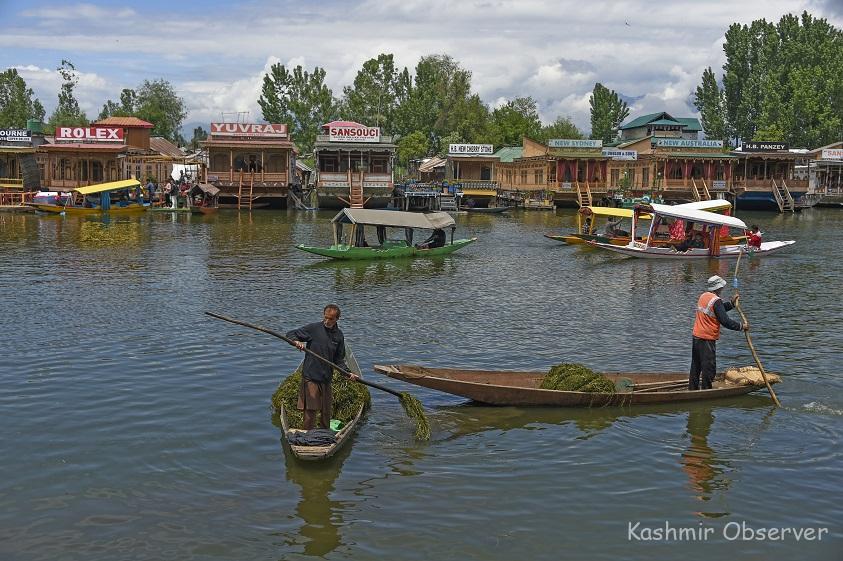
Dal lake has witnessed some neglect in the past four and a half months. Lakes and Waterways Development Authority, the agency charged with its upkeep has been amiss in its duty to keep the lake’s surface free from algae. There is thus an urgent need for the agency to redouble its efforts to bring back the lustre of the lake’s waters. The story of Dal’s conservation effort stretches back decades and comprises a systematic set of complex actions to rid the lake of the unwanted weed growth, effluents flowing from neighbouring areas and the encroachments which are shrinking its area by the day.
One of the single most cause of the Dal’s deterioration over the years is blocking of its natural drainage system as a result of the filling in of the Nallahmar in the seventies. The stream which passed through the downtown Srinagar was fed by Dal and helped in the circulation of the lake’s water. Loss of Nallahmar choked Dal. Now LAWDA has tried to make Brarinambal, a marshy waterbody near the lake, an alternative outflow channel, besides enhancing the carrying capacity of another outflow stream Nallah Amir Khan from 150 cusec to 1330 cusec.
And as for relocation of Dal dwellers is concerned, the process has been exceedingly slow. Over the past decade, less than 2000 of the 6000 families have been rehabilitated in eight colonies across Srinagar. And the rest are being shifted to Rakh Arath, a 940 acre of the government land on the outskirts of Srinagar.
The watershed management has also been taken in hand to arrest the catchment degradation through pasture development and the creation of the water harvesting structures. The intervention has helped over the years. From around 60,877 tons per year in 1999-2000, the load of sediment in the lake is stated to have declined to 30,000 tons by 2007 and more so since, says a study the LAWDA.
But despite all these measures, Dal is showing fewer signs of being on the road to recovery. The resurfacing of the algae has come as a reminder that something somewhere is seriously amiss. Environmental expert Dr Shakeel Ramshoo sees the measures like deweeding, aeration etc of the lake as adhoc in nature which in no way would make a positive difference. The untreated sewage from nearly half the Srinagar population flows into Dal. All the lake’s problems arise from this. According to Ramshoo, weed growth, fish loss, declining water quality etc can only be addressed if we arrest or treat the inflows into the lake.
The problem thus lies somewhere in the implementation. The conservation effort has witnessed a simultaneous progress and reversal, besides inordinate delays in execution. Now under a new Union Territory administration, it can only be hoped that the future is redeemingly different from the past.
Follow this link to join our WhatsApp group: Join Now
Be Part of Quality Journalism |
Quality journalism takes a lot of time, money and hard work to produce and despite all the hardships we still do it. Our reporters and editors are working overtime in Kashmir and beyond to cover what you care about, break big stories, and expose injustices that can change lives. Today more people are reading Kashmir Observer than ever, but only a handful are paying while advertising revenues are falling fast. |
| ACT NOW |
| MONTHLY | Rs 100 | |
| YEARLY | Rs 1000 | |
| LIFETIME | Rs 10000 | |











